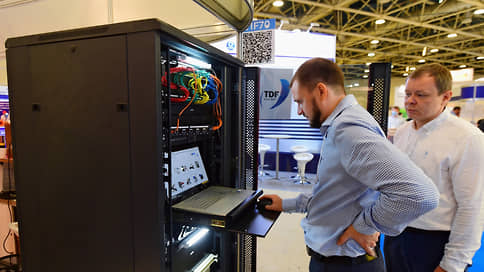The Russian DBMS market expects complete import substitution in 2025
[ad_1]

The Russian market for management and data processing systems (DBMS) in 2025 will reach the volume that was considered potential before the departure of foreign companies from Russia, the Center for Strategic Research (CSR) believes. By this year, critical information infrastructure organizations must stop using foreign software. Market participants clarify that market growth will also be spurred by purely technological factors – in particular, those related to the introduction of artificial intelligence. So far, however, import substitution of DBMS is proceeding quite slowly.
The market volume of database management systems (DBMS) and data processing tools in Russia in 2023 will be 67 billion rubles. against 56 billion rubles. a year earlier, follows from the TsSR report, which Kommersant got acquainted with. According to him, this is 29 billion rubles. lower than it would have been without taking into account the consequences of Russia’s military operation in Ukraine – in particular, the departure of foreign vendors (SAP, Oracle, IBM, etc.), whose solutions accounted for 64% of the market in monetary terms in 2021. The Center expects that in 2025 the market will reach the volume that it would have reached under previous conditions – 127 billion rubles, and by 2027 it will reach 170 billion rubles.
The growth of the DBMS market in 2024–2025 will be determined, in particular, by new requirements for critical information infrastructure (CII) objects: according to the decree of Russian President Vladimir Putin, from 2025 it will be prohibited to use software from foreign manufacturers on them. The Center for Social Development is confident that even if foreign vendors return to the Russian Federation during this period, they will face “competition from mature local players and severe opposition from the state.”
Meanwhile, a number of organizations subject to the new requirements have already asked to postpone the date of their introduction. Banks, in particular, proposed postponing them until 2027; Kommersant’s source explained their fears by the fact that automated banking systems are now adapted only for the Oracle DBMS (see Kommersant of September 8). By the beginning of 2023, only 3% of systemically important enterprises and 1.7% of CII entities had completed the transition to Russian DBMS and OS (see Kommersant on January 31).
However, due to the fact that foreign developers stopped working in Russia, sales of Russian DBMSs in 2022 “increased significantly,” says Dmitry Zhelvitsky, chief analyst of the Russoft association: “In 2023, the growth rate will most likely decrease, but this growth will continue will still be decent.” Nikolay Ulrich, director of the infrastructure consulting and information security practice at Axenix, considers the TsSR forecasts to be realistic. He clarified that the market will also be influenced by “the need for large data storage, real-time analytics, as well as changes in application architecture and the introduction of new applications with AI modules.”
It is large organizations that must transfer CII to Russian software that will ensure market growth, says Sergei Polunin, head of the infrastructure IT solutions protection group at Gazinformservice: “Small companies or startups may switch to open source DBMS and are unlikely will somehow affect the market volume.” According to Sergei Polunin, there is no point in counting on the export of Russian technologies in the near future: “It still remains problematic.” In the domestic market, he believes, sufficient competition will form between different vendors, and it “should not allow prices for products and services to change significantly.”
[ad_2]
Source link





